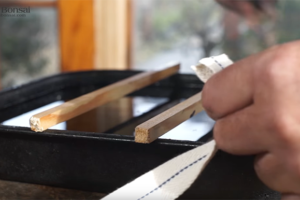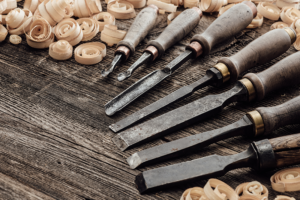What are the Classic Bonsai Design and Styles
New bonsai design 8-8 style of bonsai made with ficus plant. #bonsai #bonsaigarden #bonsaitree#ficus
Bonsai Design
Bonsai design is a crucial aspect of creating beautiful and healthy bonsai trees. A well-designed bonsai not only showcases the tree’s unique beauty but also enhances its growth and overall health. Whether you are a beginner or an experienced bonsai enthusiast, understanding the principles of bonsai design can help you create stunning and thriving bonsai specimens.
Balance and Proportion
One of the most important principles of bonsai design is balance and proportion. The tree should look harmonious and proportional, with branches and foliage evenly distributed on both sides of the trunk. The trunk should also be in proportion to the size of the bonsai pot, with the width and height of the trunk being proportional to the size of the pot.
Dominance and Subordination

Another essential principle of bonsai design is dominance and subordination. In a well-designed bonsai, there should be a clear dominant feature, such as the trunk or a particular branch, which commands attention and sets the overall style of the tree. The other features of the tree, such as the branches and foliage, should be subordinate to the dominant feature, complementing and enhancing its beauty.
Line and Movement
Line and movement are also important elements of bonsai design. The lines of the tree should be graceful and flowing, with a natural and organic look. The movement of the branches and foliage should also be in harmony with the lines of the tree, creating a sense of balance and stability.
Style
There are several styles of bonsai, each with its own unique look and character. Some of the most popular styles include formal upright, informal upright, slanting, windswept, cascade, and semi-cascade. When choosing a style for your bonsai, consider the natural growth habit of the species, the size and shape of the trunk and branches, and the overall look that you want to achieve.
Pot Selection
The pot you choose for your bonsai is also an important aspect of the design. The pot should complement the style and size of the tree, as well as the overall design. The color and texture of the pot should also harmonize with the tree and the surrounding environment.
Tips for Designing Your Bonsai
Take your time and study your bonsai tree carefully. Observe its natural growth habits, the size and shape of the trunk and branches, and the overall appearance.
Choose a style that complements the species of your bonsai tree and its natural growth habit.
Use a balanced and proportionate design, with the trunk and branches in harmony with each other.
Create a clear dominant feature, such as the trunk or a particular branch, which sets the overall style of the tree.
Choose a pot that complements the style and size of the tree, and harmonizes with the surrounding environment.
Work slowly and deliberately, making changes to the design over time as the tree grows and matures.
Be patient, as bonsai design is an ongoing process that requires time and dedication.
In conclusion, bonsai design is an essential aspect of creating beautiful and healthy bonsai trees. Understanding the principles of balance and proportion, dominance and subordination, line and movement, and style can help you create stunning bonsai specimens that showcase the unique beauty of your trees. Whether you are a beginner or an experienced bonsai enthusiast, taking the time to carefully design your bonsai trees can result in stunning works of art that will thrive and bring joy for years Bonsai design is a crucial aspect of creating beautiful and healthy bonsai trees. A well-designed bonsai not only showcases the tree’s unique beauty but also enhances its growth and overall health. Whether you are a beginner or an experienced bonsai enthusiast, understanding the principles of bonsai design can help you create stunning and thriving bonsai specimens.







Leave a Reply
Your email is safe with us.
You must be logged in to post a comment.